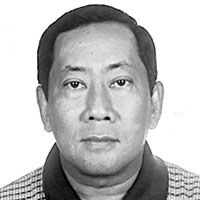Cebu creates a Metro Cebu coordinating body

As a blue-blooded Cebuano, one of the things I don’t like about the growth and development of Cebu is the reality that we are growing as quickly as Metro Manila and following almost exactly the same growth path. How many times have we written in this corner that thanks to too much politics, when you talk about Manila, it is in reality Metro Manila with so many component cities like Makati, Quezon, Pasig, Parañaque, Taguig, Marikina etc. There is only one mayor in New York City (which has five Boroughs), Tokyo, Bangkok, Moscow and Paris, etc. etc.
Hence, running the cities of Metro Manila would have been chaotic if not for the creation (during the Marcos years) of the Metro Manila Development Authority (MMDA), which during Marcos’ time was considered Imelda’s political toy. But it was a necessary toy, otherwise traffic would have been more chaotic than it already were.
On April 1, 2011 Cebu made history when something that we only dreamed about decades ago became a reality when almost all the mayors in Metro Cebu signed a memorandum creating the Metro Cebu Development Coordination Board (MCDCB). I said almost all because the mayors of the two major metro cities, notably Mayor Jonas Cortes of Mandaue City and Mayor Paz Radaza of Lapu-Lapu City didn’t attend this historic event.
Twenty-five years ago when Cebu experienced its “Cebooom”, we belatedly realized that one of the major problems we faced in the development of Metro Cebu could not be solved by one city alone. It needed the cooperation of other cities. Issues like the franchises of public transportation, sanitation or drainage which cross political boundaries, needed to be address through a common body, which was non-existent. I know what I’m talking about as I’ve been a private sector representative in the Regional Development Council (RDC-7) for more than 20 years.
When I was the volunteer (unpaid, not even by one peso) chairman of the Cebu City Traffic Operations and Management (CITOM), we had problems that were interlinked with Talisay City, Mandaue City and Lapu-Lapu City. To seek a comprehensive solution, we held two Traffic Summits — the first was the First Cebu City Traffic Summit and this was followed by the Metro Cebu Traffic Summit on Oct. 22-27, 2001. In both traffic summits, one commonality emerged... that there was a need for a Metro Cebu body following the lines of the MMDA or at least a unified traffic body.
I approached then Rep. Raul del Mar to find solutions to a unified Traffic Management Board. Back then, Rep. Del Mar had a proposed House Bill creating the Metro Cebu Development Authority (MCDA) along the lines of the Metro Manila Development Authority (MMDA). However, that idea was shot down by the political powers at that time, fearing that this would be a threat to their respective authorities as LGUs.
We then shifted to a Metro Cebu Traffic Authority (MCTA) that Rep. del Mar agreed to. However, this idea was shot down by then Mayor Tomas Osmeña because he wanted some kind of “veto power” over the other cities. Hence this idea was shelved despite the necessity for its creation.
Thus, the MoA creating the Metro Cebu Development Coordination Board (MCDCB) that was signed by the mayors of Metro Cebu, specifically from Carcar City to Danao City, has given Cebuanos a fresh hope that this body would at least untangle those problems. What makes the MCDCB unique is that it is not solely a government led organization; civil society groups are also members and signatories. They are the Mandaue Chamber of Commerce, Inc. (MCCI), Cebu Chamber of Commerce, Inc. (CCCI), Cebu Business Club (CBC), Cebu Filipino-Chinese Chamber of Commerce and Industry, Inc. (CFCCCI), Cebu Leads Foundation, IBM Philippines, and the Ramon Aboitiz Foundation, Inc. (RAFI).
While the MCDCB isn’t like the MMDA which was created by law, it has the imprimatur of Department of Interior and Local Government (DILG) Sec. Jesse Robredo who said in his keynote address, “It is always better to work together than work individually.”
RAFI president Roberto “Bobby” Aboitiz, who represented the private sector, said “Strategic thinking and planning is the disciplined approach in creating our future.” Then Mr. Aboitiz gave a very thorough PowerPoint presentation dubbed “Urban World: Mapping the Economic Power of Cities.” No doubt, the MCDCB is truly an honest-to-goodness government and private sector partnership. As Secretary Robredo said, “We in the government come and go, but the private sector always remains and never changes. With private sector supporting the Metro Cebu body, this body could never fail!
* * *
For e-mail responses to this article, write to [email protected] or [email protected]. His columns can be accessed through www.philstar.com.
- Latest
- Trending























